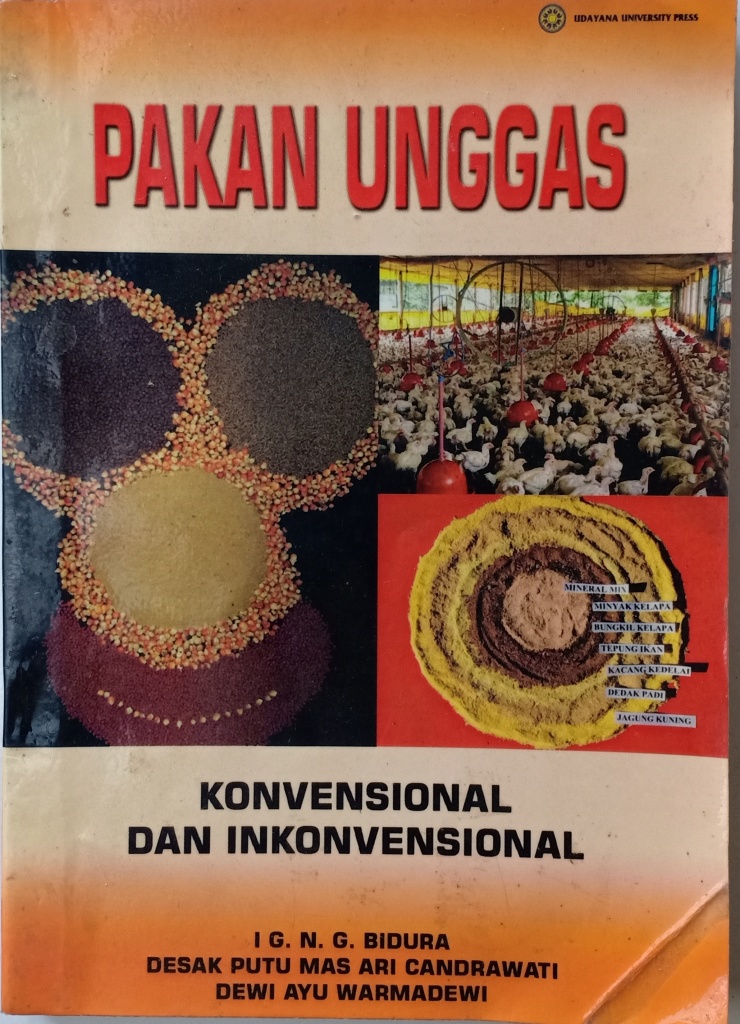
POULTRY FEED. CONVENTIONAL AND INVENTIONAL
I Gst. Nym. Gde Bidura, Desak Putu Mas Ari Candrawati, Dewi Ayu Warmadewi
ISBN : 978-602-8566-45-2 Published : 2010
Abstrak
Feed ingredients that will be given to poultry, such as corn, rice
bran, pollard, coconut cake, soybean meal, and fish meal singly are referred to
as feed ingredients. So, the term feed is used to refer to food that will be
given to livestock. For example, corn, if given to humans for consumption, is
referred to as food ingredients, whereas if given to livestock, it is referred
to as feed ingredients.
Feed
ingredients for poultry are generally sourced from feed ingredients of
vegetable origin or sourced from agricultural products and feed ingredients
from animal origin or feed ingredients from fishery products, as well as
complementary feed ingredients that are generally factory-made, which are
usually used to cover or perfect nutritional balance. Vegetable feed
ingredients account for 90-94% of the total feed formulation. This is due to
the fact that plant-based feed ingredients are generally a source of energy
that must always be fulfilled in the preparation of rations.
Vegetable
feed ingredients generally do not have sufficiently balanced amino acid
content, so in the preparation of poultry rations it should be used more than
one feed ingredient of vegetable origin with the aim of complementing each
other's advantages and disadvantages of amino acids. Thus, animal origin feed
ingredients are only complementary, considering that the price is more
expensive when compared to vegetable feed.
All
vegetable feed ingredients generally have high crude fiber content, whereas
poultry have limitations in digesting crude fiber. For more details, material
per ingredient is described as below. Feed ingredients sourced from plants for
poultry feed can be divided into two, namely (1) commonly used feed
ingredients, such as corn, rice bran, soybean meal, coconut cake, and vegetable
oil, and (2) feed ingredients that are not commonly used , namely peanut meal,
cassava, forage, and so on.
The amino
acid content of vegetable protein is generally low, unbalanced, and also
incomplete. Soybeans, for example, are best used in poultry ration, but their
methionine content is low. Soybeans that are still raw contain inhibitors
called "trypsin inhibitors". The inhibiting agent apparently can be
overcome by heating. Likewise with peanuts, the amino acid content of lysin is
low. The same thing happens with coconut cake where the amino acids lysin and
methionine are low.
